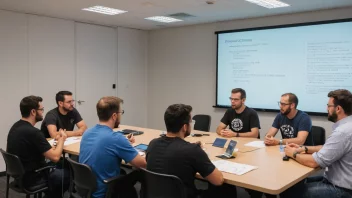Version control is an essential part of modern software development, enabling teams to collaborate efficiently and manage changes to codebases. As more teams adopt agile methodologies and remote work environments, mastering version control best practices becomes increasingly important. This article explores key principles and techniques that can optimize version control processes for teams.
At its core, version control allows developers to track changes in source code over time. This capability not only enhances collaboration but also ensures that project history is preserved, making it easier to revert to previous versions when necessary. A well-structured version control system can significantly reduce the risk of conflicts and errors, thereby streamlining the development process.
One of the foundational best practices in version control is to maintain a clear commit history. Commits should be atomic, meaning they should encapsulate a single logical change. This practice makes it easier to understand the evolution of the codebase and simplifies the process of debugging when issues arise. Developers should also write meaningful commit messages that succinctly describe the changes made, providing context for future reference.
Another critical aspect of version control is branching strategies. Effective branching allows multiple features or fixes to be developed in parallel without disrupting the main codebase. Teams should adopt a branching model that suits their workflow, such as Git Flow or the feature branch model. These strategies facilitate better collaboration among team members and make it easier to integrate new features once they are complete.
Code reviews are an integral part of maintaining code quality and fostering team collaboration. Before merging changes into the main branch, team members should conduct thorough code reviews. This practice not only helps catch bugs early but also encourages knowledge sharing among team members. Tools like GitHub and GitLab provide built-in code review functionalities that streamline this process.
Automation is another key practice that can enhance version control processes. Continuous integration (CI) tools can automatically test code upon committing changes, ensuring that new code does not break existing functionality. This automation allows teams to maintain a stable codebase and reduces the risk of introducing regressions.
Finally, regular training and adherence to protocols are essential for effective version control. Teams should invest time in training members on version control tools and best practices. Establishing clear guidelines for how to use version control within the team can minimize confusion and lead to a more cohesive development environment.
In conclusion, mastering version control best practices is crucial for teams looking to enhance their development processes. By maintaining a clear commit history, implementing effective branching strategies, conducting thorough code reviews, automating testing, and providing regular training, teams can significantly improve collaboration, reduce errors, and ensure project success. As software development continues to evolve, embracing these practices will keep teams ahead of the curve.






